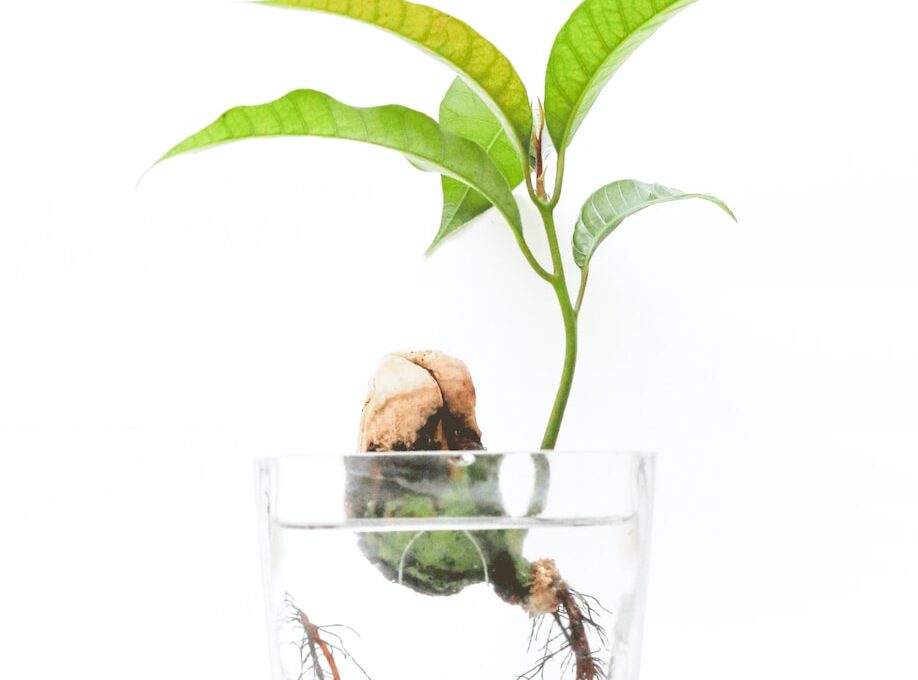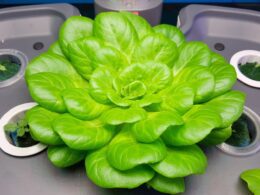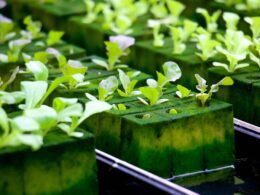Do you want to start your own hydroponic garden but worry about the electricity bill? It’s a common concern for many growers, especially those who are just starting out.
Hydroponic lighting is an essential component of any indoor garden, but it can also be one of the biggest energy consumers.
In this article, we’ll explore the question of whether hydroponic lights use a lot of electricity. We’ll break down the different types of hydroponic lighting and how they affect energy usage, as well as provide tips for reducing your energy consumption and other energy-saving techniques.
By the end of this article, you’ll have a better understanding of the energy costs associated with hydroponic lighting and how to make your indoor garden more sustainable.
Understanding Hydroponic Lighting
You’ll be amazed at how much energy is required to grow plants indoors using specialized lighting systems. Hydroponic lights are specifically designed to provide the right amount of light spectrum and intensity needed to grow plants without soil.
There are different types of hydroponic lights, such as LED, fluorescent, and high-intensity discharge (HID) lights. Each type has its own benefits and drawbacks, but they all consume a significant amount of energy.
Choosing the right hydroponic lighting system is crucial for a successful indoor garden. LED lights are the most energy-efficient option, but they’re also the most expensive. Fluorescent lights are cheaper and can be used for small indoor gardens.
HID lights, on the other hand, are the most powerful and can be used for large-scale indoor gardens. However, they require a lot of energy and produce a lot of heat, which can be a problem in small spaces.
In conclusion, hydroponic lights do use a lot of electricity, but choosing the right lighting system can help you save energy and money. LED lights are the most energy-efficient option, but they’re expensive. Fluorescent lights are cheaper and can be used for small indoor gardens. HID lights are the most powerful but consume a lot of energy and produce a lot of heat. Consider the size of your indoor garden and the type of plants you want to grow before choosing a hydroponic lighting system.
Calculating Energy Usage
When it comes to hydroponic lighting, it’s important to understand wattage and kilowatt hours. This will help you estimate your energy costs and plan accordingly.
By knowing how much energy your hydroponic lights use, you can make more informed decisions about your setup and budget.
Understanding Wattage and Kilowatt Hours
Understanding the difference between wattage and kilowatt hours can help you better manage your energy consumption when using hydroponic lights. Wattage is a measure of the rate at which electricity is being used, while kilowatt hours measure the total amount of energy consumed over time.
This means that while wattage can tell you how much energy is being used at any given moment, it doesn’t provide information on the total amount of energy used over a specific period.
To better understand the electricity consumption of your hydroponic lights, it’s essential to track both wattage and kilowatt hours. By monitoring the wattage measurement, you can determine the energy usage of your lights at any given moment.
However, by keeping track of kilowatt hours, you can track the total amount of energy used over time. This allows you to make more informed decisions about your energy consumption and potentially save on your electricity bills.
Estimating Energy Costs
If you want to save money on your energy bills, it’s time to estimate the costs of your hydroponic lighting setup. Hydroponic lights can use a lot of electricity, especially if you’re using high-wattage bulbs.
However, there are energy-efficient alternatives and budget-friendly lighting options that can help you reduce your energy consumption and save money in the long run. One energy-efficient option is LED grow lights, which use less energy than traditional high-pressure sodium (HPS) or metal halide (MH) bulbs. LED lights also produce less heat, which can help you save on cooling costs.
Another option is to use fluorescent grow lights, which are less expensive than LED lights but still produce a decent amount of light. By choosing energy-efficient alternatives and budget-friendly lighting options, you can reduce your energy costs and make your hydroponic setup more sustainable.
Tips for Reducing Energy Consumption
You can reduce your energy consumption by following these tips, which won’t only save you money but will also help the environment.
Firstly, invest in energy-efficient equipment. Hydroponic lights that are energy efficient will consume less electricity and save you money in the long run. You can also look into renewable energy sources, such as solar panels, to power your hydroponic system.
Secondly, use a timer to control the amount of time your hydroponic lights are on. Overexposure to light can cause harm to your plants and waste energy. By using a timer, you can ensure that your plants receive the right amount of light without consuming excess electricity.
Lastly, make sure to regularly maintain and clean your hydroponic system. A clean system will function more efficiently and use less electricity. Check for leaks, clogs, and other issues that can cause your system to use more energy than necessary.
By following these tips, you can reduce your energy consumption and save money while also contributing to a more sustainable future.
Does the Depth of Lettuce Roots in Hydroponics Affect Electricity Consumption for Hydroponic Lights?
The lettuce root depth in hydroponics plays a crucial role in determining electricity consumption for hydroponic lights. A deeper root system improves nutrient absorption, thereby enhancing plant growth. With healthier plants, the need for artificial lighting decreases, resulting in lower electricity usage. Therefore, optimizing lettuce root depth in hydroponics can significantly impact electricity consumption for hydroponic lights.
Other Energy-Saving Techniques
To further lower your energy consumption, consider implementing additional techniques that can benefit not only your hydroponic system but also the environment.
One way to save energy is by investing in energy-efficient equipment. LED grow lights are a great example of this, as they use significantly less energy than traditional bulbs and last longer too. In addition to saving energy, they also produce less heat, which can reduce the need for cooling systems.
Another way to reduce your energy usage is by utilizing renewable energy sources. Solar panels are a great option for hydroponic systems, as they can provide power to your grow lights, pumps, and other electrical equipment. While the initial investment may be higher, the long-term savings and environmental benefits make it a worthwhile investment. You can also consider using wind turbines or hydroelectric systems if they’re available in your area.
In addition to investing in energy-efficient equipment and renewable energy sources, there are other energy-saving techniques you can implement. For example, you can use timers to control when your grow lights and pumps turn on and off, ensuring they’re only running when necessary. You can also insulate your hydroponic system to reduce heat loss and use reflective materials to maximize the effectiveness of your grow lights.
By being mindful of your energy consumption and implementing these techniques, you can not only save money on your electricity bill but also reduce your environmental impact.
Considering the Overall Cost
When considering hydroponic gardening, it’s important to weigh the energy costs against other expenses. This will help you make an informed decision about whether or not it’s worth it for you.
By doing so, you can ensure that you’re making the best use of your resources and getting the most out of your hydroponic garden.
Weighing Energy Costs Against Other Expenses
Considering the expenses involved, it’s important to weigh the cost of energy against other necessary expenses when setting up a hydroponic system. While hydroponic lights do use electricity, it’s important to remember that energy efficiency varies between different models.
When budgeting for your hydroponic system, take into account the cost of the lights as well as other necessary expenses such as nutrients and fertilizers, growing media, water quality testing equipment, and pest control measures.
It’s also important to consider the long-term savings that come with hydroponic gardening, such as reduced water usage and less waste. By carefully budgeting and investing in energy-efficient hydroponic lights, you can set up a system that is both cost-effective and environmentally sustainable.
Making an Informed Decision About Hydroponic Gardening
Now that you’ve weighed the energy costs of hydroponic lights against other expenses, it’s time to make an informed decision about whether or not hydroponic gardening is right for you.
The first step is to choose the right plants for your hydroponic system. Some plants, such as lettuce and herbs, thrive in hydroponic systems while others, like tomatoes and peppers, require more space and resources. By selecting the right plants, you can optimize your system for maximum growth and minimal energy usage.
The benefits of hydroponic gardening are numerous. Not only can you grow fresh produce year-round, but you can also reduce your carbon footprint by using less water and no pesticides. Plus, since hydroponic systems are typically set up indoors, you can enjoy gardening even if you don’t have a yard or outdoor space.
With the right setup and plant selection, hydroponic gardening can be a sustainable and rewarding way to grow your own food.
Frequently Asked Questions
How long do hydroponic lights typically last before needing to be replaced?
Hydroponic lights typically last for a long time, so you don’t have to worry about replacing them too often. The longevity of these lights is largely dependent on the type of bulb you choose and how often you use them. LED lights tend to last the longest, with an average lifespan of around 50,000 hours, while other types of bulbs may only last for 10,000 hours or less.
As for energy consumption, hydroponic lights do use more electricity than traditional lights, but the benefits of using them far outweigh the costs. In addition to helping your plants grow faster and healthier, hydroponic lights are also more energy-efficient than other types of grow lights, so you can save money on your energy bill in the long run.
Are there any environmental concerns associated with using hydroponic lights?
Using hydroponic lights can have a negative impact on the environment. One of the main concerns is light pollution. The bright lights used in hydroponic systems can disrupt the natural patterns of wildlife, affecting their behavior and reproduction. This can lead to a decrease in biodiversity and even endangerment of certain species.
Additionally, these lights use a significant amount of electricity, contributing to greenhouse gas emissions and climate change. It’s important to consider the environmental impact of hydroponic lights and explore ways to minimize their negative effects.
Can hydroponic lights be used for other purposes besides growing plants?
Looking for indoor lighting alternatives that also serve a decorative purpose? Look no further than hydroponic lights! While they’re primarily used for growing plants in a hydroponic system, there are also decorative hydroponic lights that can add a unique touch to your home or office.
These lights come in a variety of colors and styles, and can be used to create a cozy ambiance or a bold statement. Plus, since they use LED technology, they’re energy-efficient and won’t consume a lot of electricity.
So not only will you be able to enjoy beautiful, unique lighting, but you can also feel good about your eco-friendly choice.
What types of plants are best suited for hydroponic lighting?
If you’re interested in indoor gardening, hydroponic lighting can be a great option. Some plants are better suited for hydroponic systems than others, such as leafy greens like lettuce and herbs like basil. These plants have relatively simple nutritional needs, making them easy to grow using hydroponic techniques.
By using hydroponic lighting, you can provide your plants with the exact amount of light they need to thrive, without worrying about natural light availability. And while hydroponic lighting does require electricity, modern LED lights are incredibly efficient and can actually save you money in the long run compared to traditional lighting methods.
Overall, hydroponic lighting can be a great way to improve your indoor gardening skills and provide your plants with the nutrition they need to thrive.
Are there any government incentives or rebates available for using energy-efficient hydroponic lights?
Looking for ways to make your hydroponic lighting more energy-efficient? Luckily, there are government incentives and rebates available for those who invest in energy-efficient hydroponic lights.
These incentives can help offset the initial cost of purchasing and installing these lights, making them a more affordable option in the long run. Plus, investing in energy-efficient lighting not only saves you money on your electricity bill, but it also helps reduce your carbon footprint.
So, if you’re looking for a way to make your hydroponic setup more environmentally-friendly and cost-effective, consider looking into government incentives for energy-efficient lighting.
Conclusion
Now that you know how much electricity hydroponic lights use and how to calculate their energy usage, you can take steps to reduce your energy consumption. By choosing LED lights, using timers, and adjusting the intensity of your lights, you can lower your energy bills without sacrificing plant growth. It’s also important to consider other energy-saving techniques, such as using reflective surfaces and insulating your grow space.
While hydroponic lighting can be costly, it’s important to consider the overall cost and benefits. By investing in energy-efficient lighting and implementing energy-saving techniques, you can save money in the long run while also growing healthy, thriving plants.
With these tips in mind, you can create a sustainable and efficient hydroponic system that works for you.









